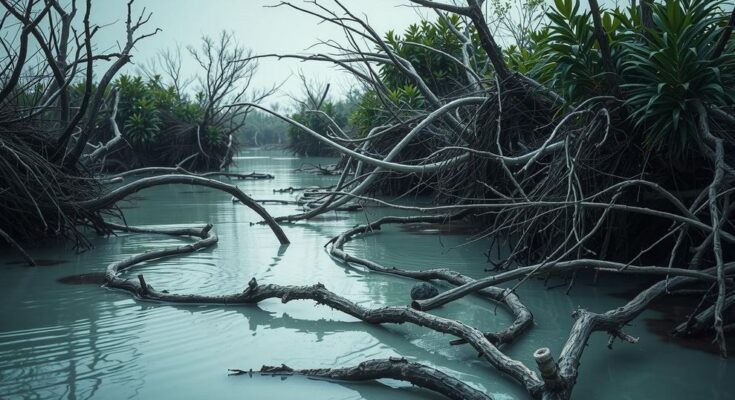A study from Curtin University has confirmed that Very Low Sulphur Fuel Oil (VLSFO) from the MV Wakashio oil spill is still present in Mauritius mangroves nearly three years post-incident. The analysis verified the oil’s source and highlighted ongoing environmental risks despite some biodegradation. Published in the Marine Pollution Bulletin, the research provides vital insights into how new marine fuels behave in the environment.
Three years after the MV Wakashio ran aground near Mauritius, a study led by Curtin University reveals that remnants of a new marine fuel oil are still detectable in nearby mangrove ecosystems. The bulk carrier, which spilled 1,000 tons of Very Low Sulphur Fuel Oil (VLSFO), has left a lingering impact in this environmentally significant area, which is close to Ramsar conservation sites.
Dr. Alan Scarlett, from Curtin’s WA Organic and Isotope Geochemistry Center, emphasized the importance of this study, stating that the chemical analysis confirmed the oil pollution originating from the Wakashio spill. While local communities suspected contamination, this research provides official verification of the source. Dr. Scarlett noted, “Identifying and acknowledging this contamination is crucial, both for the people of Mauritius and for global understanding…”
The researchers analyzed samples from the mangrove wetlands, distinguishing contaminated sites from a reference site presumed unaffected. “We confirmed the reference site was free of oil contamination, while another site contained oil originating from the Wakashio’s fuel tanks,” Dr. Scarlett explained, shedding light on the spill’s ongoing effects.
Despite significant weathering and biodegradation of the spilled oil over three years, the study warns that its enduring presence may still threaten the delicate mangrove ecosystem. The research team previously collaborated with the Woods Hole Oceanographic Institution, which assisted in characterizing the unique chemical fingerprint of the spilled fuel.
Additionally, the study employed models from the National Oceanic and Atmospheric Administration’s WebGNOME-ADIOS tool to compare the behavior of VLSFO with traditional marine heavy fuels. The results indicated that more of the Wakashio’s fuel would likely evaporate or disperse than conventional types but also acknowledged the challenges in assessing the potential impact on marine organisms.
The comprehensive research is titled “Very Low Sulfur Fuel Oil spilled from the MV Wakashio in 2020 remains in sediments in a Mauritius mangrove ecosystem nearly three years after the grounding” and has been published in the Marine Pollution Bulletin.
The research highlights the long-term ecological consequences of the MV Wakashio oil spill, confirming that remnants of Very Low Sulphur Fuel Oil persist in Mauritius’ mangroves even after three years. The findings underscore the need for ongoing monitoring of the area to safeguard the sensitive ecosystems and provide essential data for understanding the behavior of newly introduced marine fuel oils in the marine environment.
Original Source: www.marinelink.com




